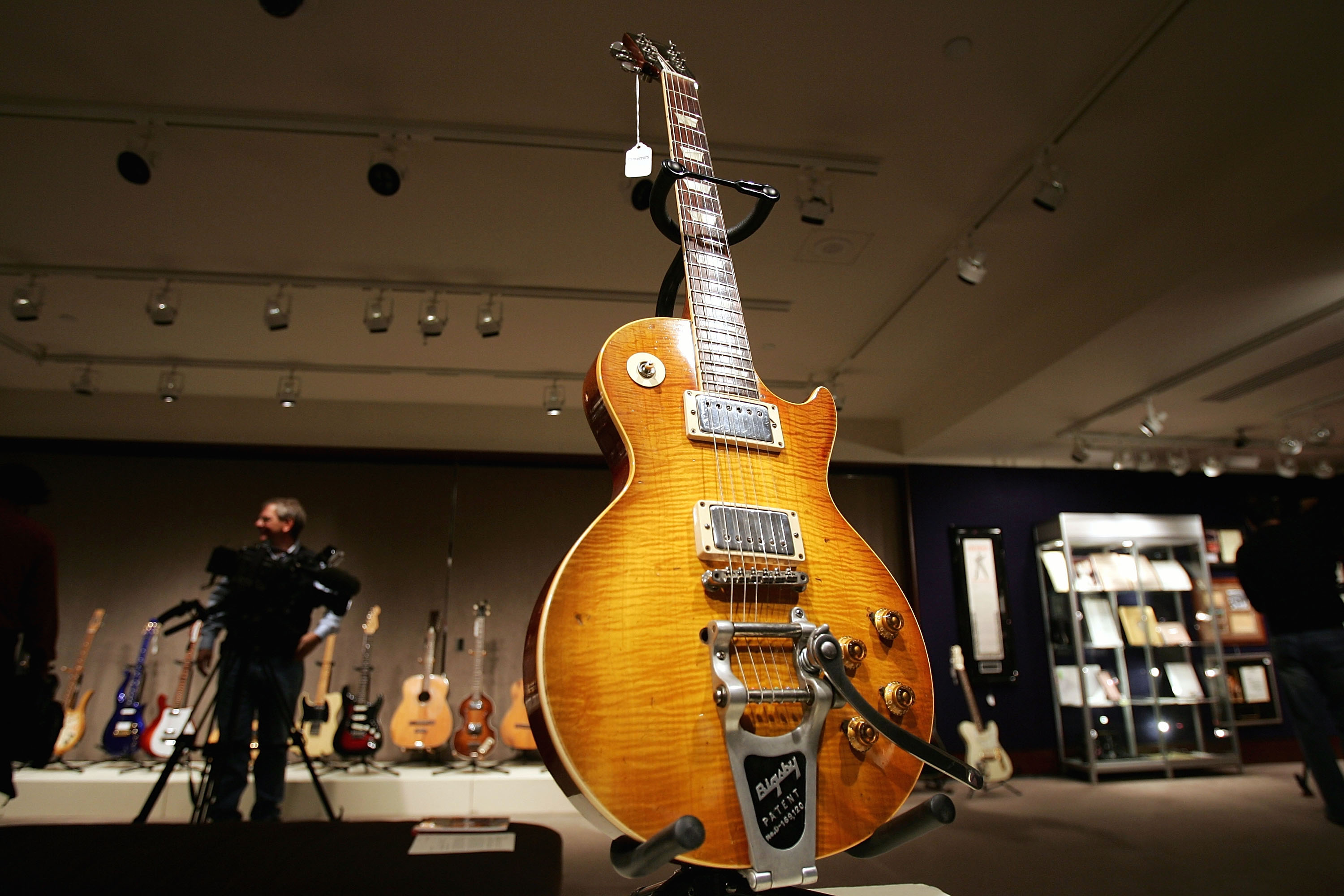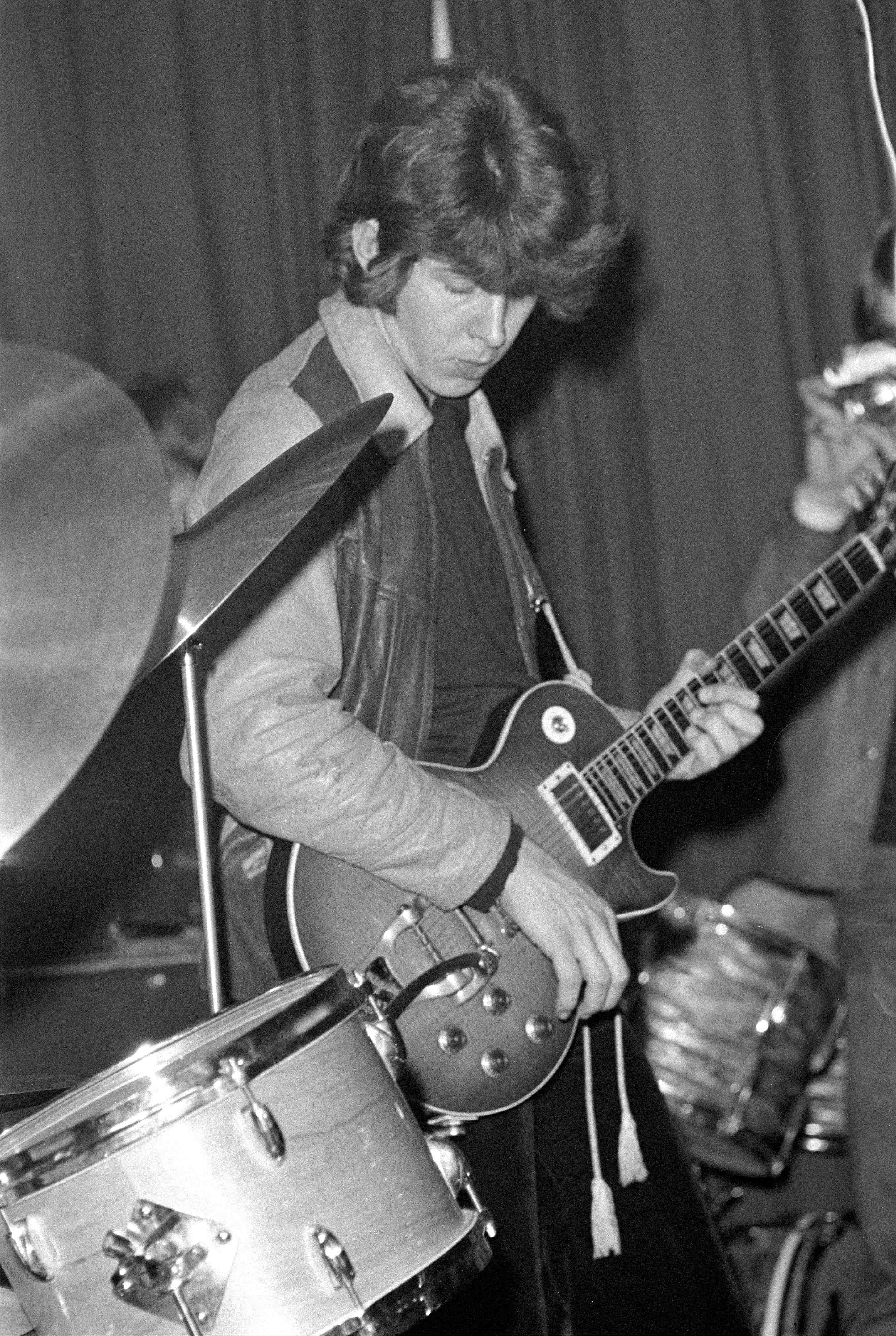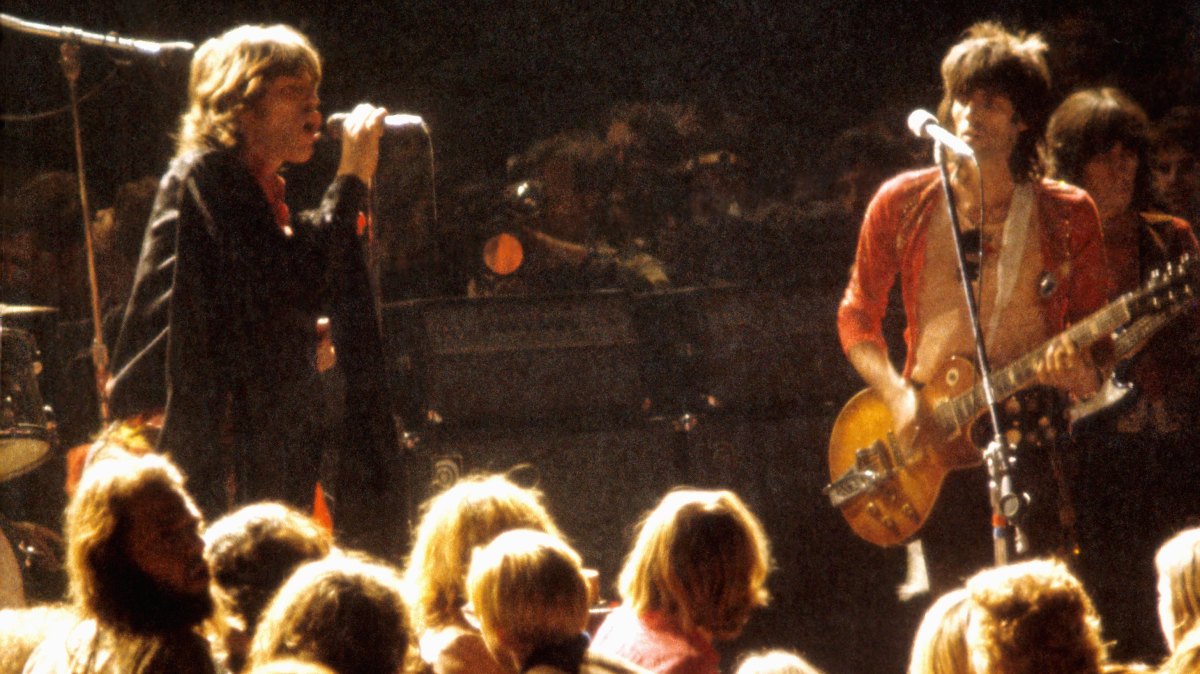When the Rolling Stones were working on their album Exile on Main St in 1971 near Nice, burglars stole eight guitars from the Villa Nellcôte, in Villefranche-sur-Mer, where the band were staying. Among them, as some accounts suggest, a distinctive 1959 Gibson Les Paul.
At the time it was used by Mick Taylor, now 76, the Stones’ guitarist. Then it seemed to have disappeared until the Metropolitan Museum of Art in New York announced in May it had been given a collection of 500 guitars — including a 1959 sunburst Les Paul.
The guitar, one of a number made by the Gibson company that came to be known as “bursts” because of their gleaming sunburst finish, is also referred to as the “Keithburst” because it had initially belonged to Keith Richards, now 81. Shortly after the Met’s announcement, representatives for Taylor said he was surprised the guitar found its way into the collection after its disappearance.

The guitar on display at Christie’s in New York City in 2004
SPENCER PLATT/GETTY IMAGES
Marlies Damming, Taylor’s manager, told Page Six: “There are numerous photos of Mick Taylor playing this Les Paul, as it was his main guitar until it disappeared. The interesting thing about these vintage Les Pauls [from the late 1950s], is that they are renowned for their flaming … which is unique, like a fingerprint.”
However, the Met has since claimed that according to its own research Taylor never owned the guitar and that it has had a public record for decades. The guitar went up for auction at Christie’s in 2004 and it was featured in a Met exhibition in 2019, the museum added.
A Met spokesman said: “This guitar has a long and well-documented history of ownership.”
Its exact provenance has been the source of contention. It starts with confusion about who owned it before Richards bought it at Selmer’s music store in London. Varying versions name either John Bowen, who played with Mike Dean & the Kinsmen, or Ken Lundgren of the Outlaws.

Mick Taylor in 1968
JORGEN ANGEL/REDFERNS
In any case by 1964 it was in Richards’s possession and he played it during the Rolling Stones’ first appearance on the Ed Sullivan Show that same year. Four years later Taylor, who was then still playing with John Mayall’s Bluesbreakers, bought it from Ian Stewart, the Stones’ road manager.
• Ranked: the 10 best Rolling Stones songs
Taylor previously said: “I met Ian Stewart, their roadie who also plays piano. I met him, and I told him I was looking for a Les Paul, because the other one had been stolen. And he said: ‘Well, we’ve got one for sale. Come to the studio and have a look at it.’”
A year later, Taylor joined the Rolling Stones and frequently used the Les Paul on stage, including during his 1969 Hyde Park debut with the band. Then the provenance gets murky.
Andy Babiuk, the author of Rolling Stones Gear, a 700-page anthology of Stones instruments, claims Taylor’s 1959 Gibson Les Paul was among the eight guitars stolen in 1971.
However, the Met argues that according to its research the guitar was not taken in that theft and was still owned by Richards at the time. Its provenance lists Adrian Miller as the owner in 1971, although it does not say how he acquired it. In the same year it was sold to Cosmo Verrico, of the rock band Heavy Metal Kids.
• Mick Jagger’s £5.5m Marylebone flat — buy a part of rock history
In recent decades the guitar was put up for auction on multiple occasions and, about ten years ago, was acquired by Dirk Ziff, an investor and billionaire. In May, it was among 500 guitars given to the Met by Ziff, which also included Leo Fender’s first guitar made in 1948, a Gibson 1955 J-50 acoustic guitar used by Delta blues musician Mississippi John Hurt, and the “Futura” guitar owned by blues guitarist Ponty Gonzalez in about 1956.
Taylor has been asked for comment.
The Met said it had not heard from Taylor nor his representatives about the issue. However, Damming told The Times in a statement: “It would appear that the Metropolitan Museum has not acknowledged receipt of messages from Taylor’s legal counsel, and they have not responded to his request for inspection of the guitar.”
